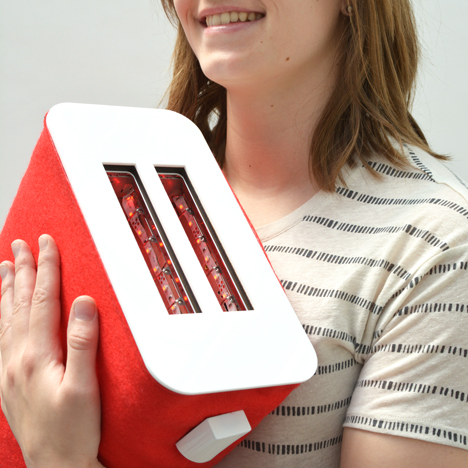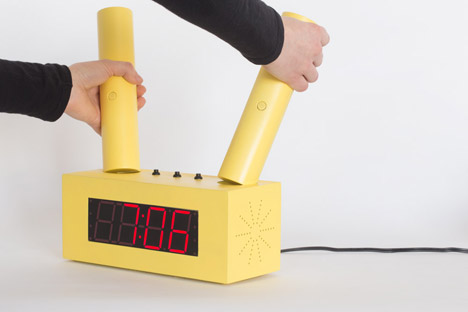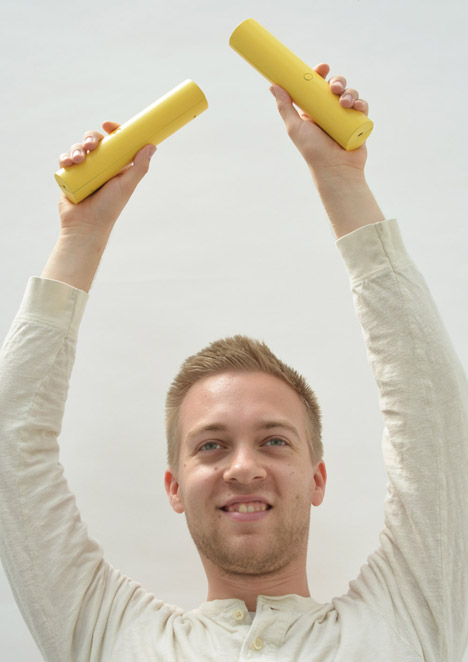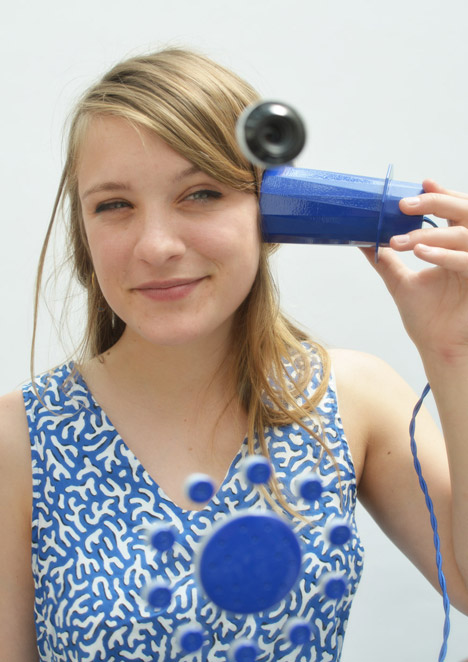Ted Wiles creates huggable toaster for Involuntary Pleasures product range
Graduate shows 2015: a toaster that needs hugging and an alarm clock that buzzes until raised above the head are among Royal College of Art graduate Ted Wiles' collection of interactive household objects (+ movie).
Wiles' Involuntary Pleasures products require users to interact with them in ways that promote happiness and wellbeing.
"They are normal consumer electronics, but the physical interactions create chemical changes within the user's brain to engender feelings of delight and happiness," said Wiles.

His elongated red felt-covered Hugging Toaster only works when squeezed against the body. The device is activated when pressure is applied to sensors within the object, which must be sustained for the duration of the cooking time.
"It is a very needy toaster," the designer told Dezeen. "It feels warm when you hug it – that's why it's red, for feelings of warmth, love and comfort."
Hugging increases levels of dopamine and serotonin chemicals in the user's brain, while reducing heart rate, resulting in feelings of comfort and happiness.

His range also includes the box-like bright yellow Victory Alarm Clock, which features two batons in the top that must be removed and held above the user's head in a V shape to stop the alarm.
Accelerometers within the hand-held batons communicate their position to the base via Bluetooth, deactivating the alarm after two minutes.
The so-called "victory position" has been shown to increase testosterone and reduce cortisol levels, making the user feel more confident and less stressed, according to the designer.

The Smile Telephone is a contemporary version of a traditional wall-mounted telephone, with a mirror attached.
A camera in the top the reflective surface uses facial-recognition software to determine the caller's facial expression, and only allows calls to be made and received when they smile at their reflection.
"The telephone forces the user to engage with a positive self image of themselves and causes an increase in levels of serotonin in the brain," explained Wiles. "If you don't smile every ten seconds, it puts you on hold and reminds you to smile."

The Reflective Mirror creates an amplified and distorted reflection in response to user moving their right hand in front of it.
A Microsoft Kinect sensor detects the position of the hand, which computer software translates to an actuator that pushes out the surface of the stretchy mirrored material. It is designed to offer a moment of "meditative contemplation".
"It is a moment to consider one's self-projected image," said Wiles. "It allows you to distort reality and reminds you that everything we experience is from a subjective perspective."
Wiles, who studied on the RCA's Design Products course, presented the project at the institution's annual graduate exhibition earlier this summer. Show RCA 2015 took place from 25 June to 5 July, and also featured a staircase that straps to tree trunks and a personal tattoo machine.